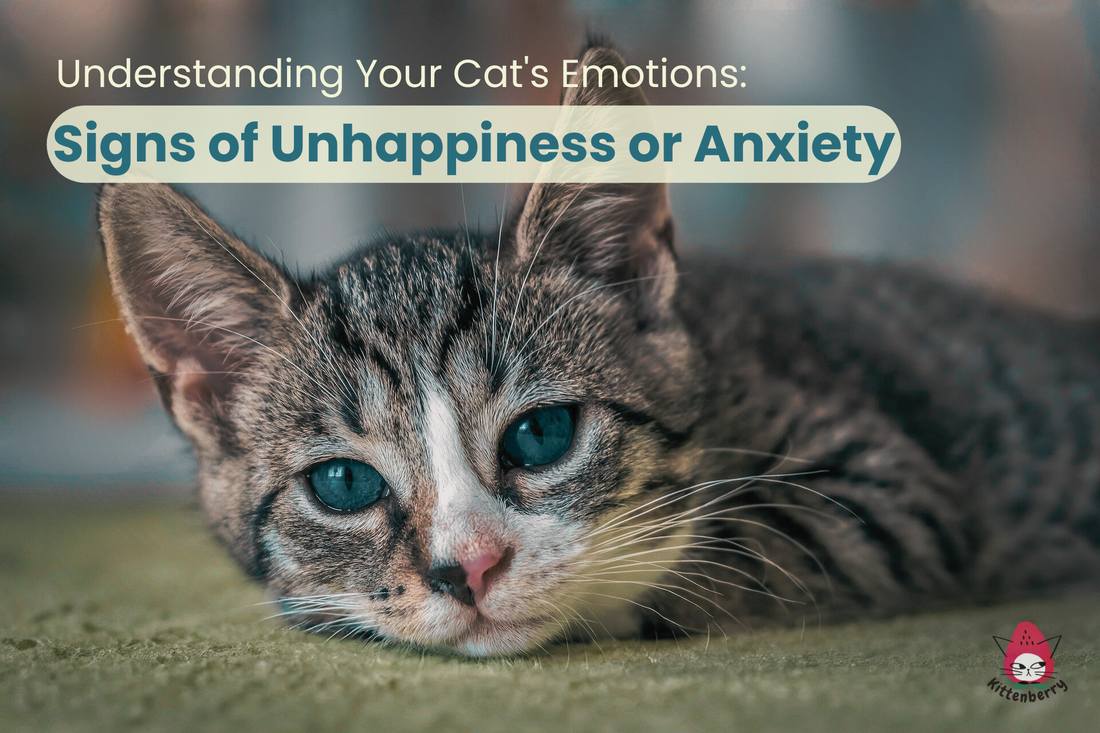
Understanding Your Cat's Emotions: Signs of Unhappiness or Anxiety
Share
As devoted cat owners, we often marvel at our feline friends’ independent and enigmatic nature. However, just like us, our cats can experience a wide range of emotions, including unhappiness and anxiety. If you're a cat owner in the UK, it's important to recognize the signs that your beloved companion might be feeling distressed. Here’s a compassionate guide to help you identify these clues and offer the comfort and support your cat deserves.
Changes in Appetite
One of the most noticeable indicators that your cat might be feeling anxious or unhappy is a sudden shift in their eating habits. If your kitty is eating less or completely turning away from their favorite food, it could be a sign of underlying stress. Conversely, if they are overeating or begging for treats excessively, it may reflect their emotional discomfort. It's crucial to consult with a veterinarian first to rule out any medical issues that might be at play.
Hiding or Avoiding Interaction
While it's normal for cats to seek out cozy hiding spots, if your cat starts retreating more than usual or seems less inclined to engage with you, it could indicate that they are feeling anxious or scared. An unhappy cat might seek solace in quiet, secluded areas, and remain in those spaces for extended periods. It's important to be gentle and patient during these times, allowing them the space they need while also letting them know you’re there for them.
Excessive Grooming or Lack of Grooming
Cats are typically meticulous groomers, but a stressed or unhappy cat may overgroom to the point of creating bald spots, especially on their legs or belly. On the flip side, if your cat suddenly stops grooming altogether, it might signal sadness or discomfort. Paying attention to these grooming habits can help you provide the care they need.
Aggressive or Destructive Behavior
If your normally gentle cat begins displaying unusual aggression toward people or other pets, it can be quite concerning. Similarly, destructive behaviors, such as excessively scratching furniture or knocking things over, might be their way of expressing distress. Understanding these behaviors as cries for help allows us to respond with compassion rather than frustration.
Changes in Vocalization
Cats have their own unique ways of communicating, but sudden changes in vocalization—such as increased meowing, yowling, or hissing—can indicate anxiety. Taking note of these vocal cues, especially when paired with other unusual behaviors, can help you understand what they might be feeling.
Litter Box Issues
If your cat begins urinating or defecating outside of their litter box, it’s a significant sign that something is troubling them. Stress can disrupt their routines and lead to accidents, so it’s essential to ensure the litter box is always clean and placed in a quiet, accessible location.
Unusual Body Language
Keep an eye out for signs like tense body posture, flattened ears, dilated pupils, or a tail tucked between their legs—these indicate that your cat may be feeling fearful or unhappy. Tail flicking or swishing aggressively can also be a signal of stress. Observing these physical cues helps us respond appropriately to our furry friends' emotional needs.
Common Causes of Anxiety in Cats
Understanding what might cause your cat’s anxiety can help you address their needs effectively. Some common triggers include: - Changes in their environment, such as new furniture, renovations, or moving to a new home. - Introduction of new pets or people into the household. - Lack of stimulation or boredom. - Underlying medical issues or pain. - Loud noises or disruptions in their usual routine.
Ways to Support an Anxious or Unhappy Cat

Create a Safe Space:
Consider setting up a quiet, cozy area where your cat can retreat to feel safe and secure.
Maintain a Routine:
Cats thrive on consistency, so try to keep feeding and playtime at the same times each day.
Use Calming Products:
Look into pheromone diffusers or sprays designed to help ease feline stress and anxiety.
Engage in Interactive Play:
Spend quality time playing with your cat to keep them mentally and physically engaged.
Consult a Veterinarian:
If your cat’s anxious behavior continues, don’t hesitate to consult a vet. They can help rule out medical issues and recommend appropriate treatments or behavioral therapies.
Final Thoughts
At Kittenberry we understand that your cat's happiness and well-being are integral to your journey as a pet owner. By tuning into the signs of unhappiness or anxiety, you can take meaningful steps to create a nurturing environment where your furry companion feels safe, loved, and content.
For more insights on how to care for your beloved cat, explore our essential products tailored to foster a stress-free atmosphere. Want to spoil your cat? Dive into our collection of cozy beds, interactive toys, and calming products designed to keep your furry friend happy and healthy. Shop now at KittenBerry!
